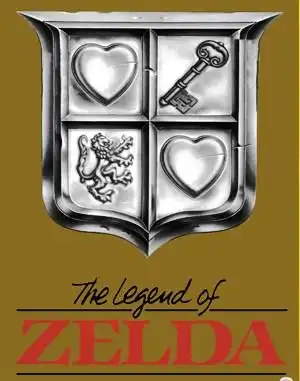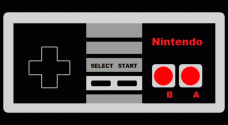Few game series evoke the same sense of wonder and adventure as The Legend of Zelda. For decades, it's been synonymous with epic quests, mysterious dungeons, and the timeless struggle between good and evil in the land of Hyrule. If you grew up with a Nintendo console, chances are Link's green tunic and the iconic overworld theme are etched into your gaming soul.
But what is it about this series that has kept us coming back for more, generation after generation? Let's take a nostalgic trip back and explore the magic that is The Legend of Zelda.
The Roots of Hyrule: 8-bit Beginnings
Our journey begins in 1986 with the original The Legend of Zelda on the NES. This wasn't just another game; it was an experience. Dropped into a vast, open overworld with little direction, players had to explore, talk to NPCs (remember "EASTMOST PENNINSULA IS THE SECRET"?), and figure things out for themselves. It was challenging, sometimes frustrating, but incredibly rewarding. Finding that first dungeon, bombing a seemingly random wall to reveal a secret, or finally getting the boomerang felt like genuine accomplishments.
Zelda II: The Adventure of Link followed, taking a controversial side-scrolling turn with RPG elements. While different, it still had that undeniable Zelda DNA – exploration, challenging combat, and a sense of mystery. It's a black sheep for some, but a beloved classic for others.
The 16-bit Golden Age: A Link to the Past
For many retro gamers, the pinnacle of 2D Zelda is The Legend of Zelda: A Link to the Past on the Super NES. This game perfected the top-down formula established by the original. It introduced the brilliant Light World/Dark World mechanic, adding incredible depth to exploration and puzzle-solving.
A Link to the Past felt bigger, richer, and more polished than its predecessors. The graphics were stunning for the time, the music was unforgettable, and the gameplay flowed beautifully. It set a template that future 2D entries would follow and is often cited as one of the greatest games ever made. Its balance of action, puzzles, and discovery feels just as good today as it did back then.
Stepping into 3D: A New Dimension
The move to 3D with The Legend of Zelda: Ocarina of Time on the Nintendo 64 was revolutionary. It translated the core Zelda experience into a fully explorable 3D world, introducing mechanics like Z-targeting that became industry standards. The sense of scale, the cinematic moments, and the emotional story captivated a whole new generation while cementing the series' legacy for old fans.
Majora's Mask followed, offering a darker, more experimental take with its unique time-loop mechanic and focus on character stories. These N64 titles proved that Zelda's magic wasn't confined to two dimensions.
Why Zelda Still Casts a Spell
Beyond the specific games, what makes The Legend of Zelda so enduring?
- World Building: Hyrule feels like a real place, full of history, secrets, and memorable characters.
- Exploration: The series excels at making discovery rewarding, encouraging players to poke into every corner.
- Puzzles: From dungeon layouts to environmental riddles, Zelda's puzzles are clever and satisfying to solve.
- Music: Koji Kondo's iconic compositions are instantly recognizable and perfectly capture the mood of adventure.
- Sense of Adventure: At its heart, every Zelda game is about embarking on an epic quest, facing challenges, and becoming the hero Hyrule needs.
Reliving the Adventure Today
Feeling that nostalgic pull to revisit Hyrule? Luckily, Nintendo has made many classic Zelda titles accessible on modern hardware.
- Nintendo Switch Online: Subscribers can play the original The Legend of Zelda, Zelda II, A Link to the Past, Ocarina of Time, Majora's Mask, and Link's Awakening DX through the NES, SNES, and N64 apps.
- Official Re-releases/Remakes: Games like Link's Awakening (Switch remake) and Skyward Sword HD are available.
- Virtual Console (Older Systems): If you still have a Wii U or 3DS, their eShops offered many classics (though these services are winding down).
- Emulation: While not officially supported, emulators allow playing ROMs of older titles on various devices.
Whether you're revisiting a childhood favorite or experiencing Hyrule for the first time, the adventure is waiting.
Frequently Asked Questions About The Legend of Zelda
Q: What was the very first Legend of Zelda game? A: The original The Legend of Zelda was released in Japan in 1986 for the Famicom Disk System, and in 1987 for the NES worldwide.
Q: Is there a correct timeline for the Zelda games? A: Yes, Nintendo officially released a timeline in the Hyrule Historia book. It's complex and even splits into different branches after Ocarina of Time, but it provides an official order for the main series games.
Q: Why is Link usually silent? A: Shigeru Miyamoto intended Link to be a silent protagonist so players could more easily project themselves onto the character and feel like they are the hero of the adventure.
Q: Which classic Zelda game should I play first? A: The Legend of Zelda: A Link to the Past is often recommended as a great starting point for classic 2D Zelda, while Ocarina of Time is the go-to for experiencing the 3D transition. The original NES game is also essential for understanding where it all began, but be prepared for a challenge!
The Legacy Lives On
From its humble 8-bit beginnings to sprawling open worlds, The Legend of Zelda series has consistently pushed boundaries while staying true to its core spirit of adventure. It's a testament to brilliant design, memorable characters, and a world that begs to be explored. For retro gamers, these titles aren't just games; they're time machines back to simpler days filled with wonder, challenge, and the unforgettable feeling of saving a princess and a kingdom.
So, grab your controller, cue up that iconic theme music, and get ready to explore Hyrule once more. The Triforce awaits!


